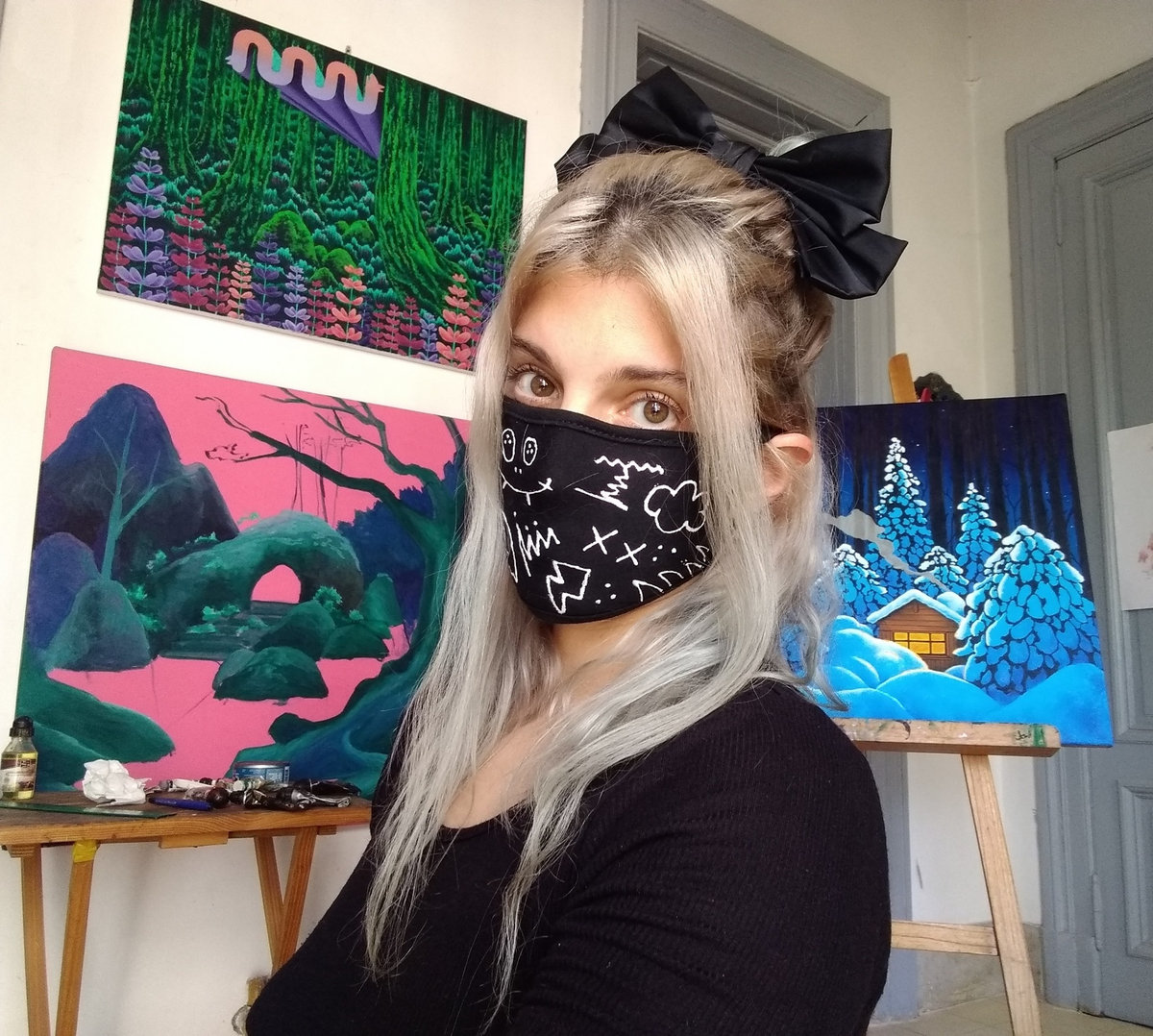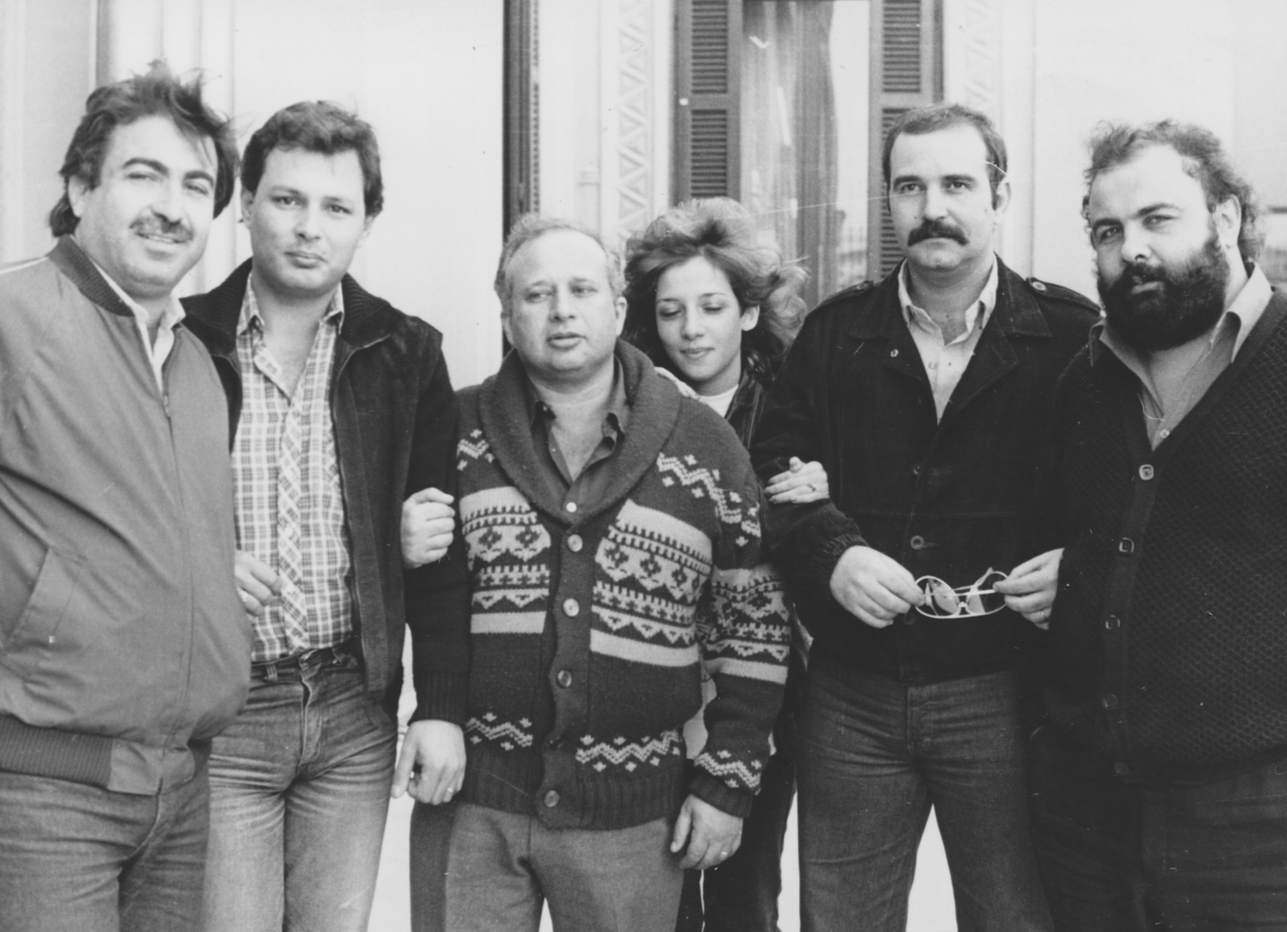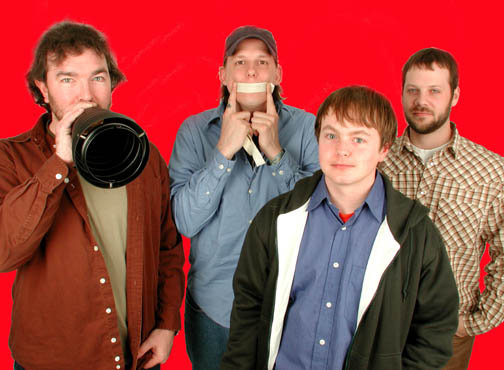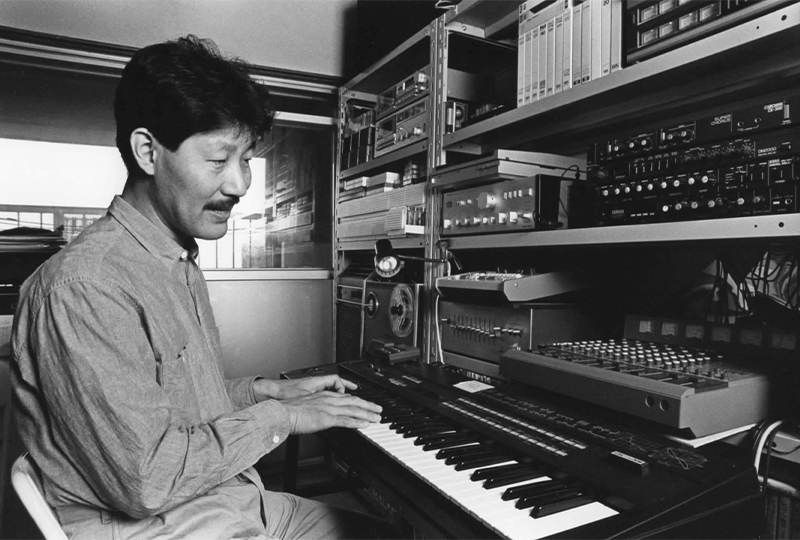
'In Our Headphones' is a new column from KEXP's Digital Content Team. Put simply, it's a sneak peek into the music finding its way into our ears and soundtracking our every day lives. This month's inaugural column serendipitously aligns with Bandcamp Friday! We highly recommend purchasing any of these records through Bandcamp with 100% of the proceeds going to the artist.

There's so much to sink your teeth into when listening to Tree, Chicago-bred innovator of soul-trap; the sound feels less like a subgenre and more an extension of his soul. It's more than booming 808's over wailing samples or Tree's Newport rasp warbling over dissolved relationships. His lyrics have narrative and emotional depth, he raps and sings about the life he's lived with pathos and setbacks, cousins getting killed at house parties, flings with actresses, and a deep well of trust issues.
We Grown Now – part of the tapestry of Tree's ultra-productive 2019 where he released three projects after his fans spent years wondering if he decided to retire from rap music – finds the artist in rare form as he alludes to Kenny Lattimore and LeBron James, blowing money at the car lot, taking trips across state, knocking women up and paying for their abortions, blocks getting shut down, watching his sons grow up, and getting ghosted by Chance the Rapper after running into his Chicago contemporary at SXSW.
Tree is a writer of more emotional tones than most rappers have Soundcloud-exclusive projects: humorous, remorseful, doggedly unrepentant, nostalgia-tinged, haunting (and haunted), lovelorn. And he does it with such musical and rhythmic deftness it's easy to be hypnotized as the samples and drums crack through the air. – Martin Douglas

Not being able to handle a new language 100% in a country that is not your own has some beautiful advantages. You build yourself a very meticulous mental ranking of unbeatable artists from your homeland. Those with whom you know you will score a goal every time you recommend them to someone who has never heard them before. It’s that feeling of creating a new fan of the bands closest to your heart. For me, Marina Fages is one of those artists and she has been in my headphones lately because a few days ago she launched Vivo en Pijama, a compilation of her work created in isolation.
Marina Fages is an Argentine visual artist, composer, multi-instrumentalist, and performer. She has had a regular presence in Europe, Latin America, and Japan. Marina has a repertoire composed of a great sound map that ranges from indie folk to intense rock.
My favorite album of hers is Dibujo de Rayo (2015), although I am also a fan of Epica and Fantástica (2019). That's why I really appreciated Vivo en Pijama, an album that contains intimate, acoustic versions of songs from these same favorites, sung softly and in Fages’ own art studio. In her own words, it was like, "trying to appease or put to sleep a monster that wants to get out of its confinement". – Albina Cabrera

Ernest Greene has long been a master of mood, putting sound to feeling with his impressionistic world-building production as Washed Out. His unique ability to hijack my inner monologue, to flood the private corners of my emotional sundial with ambient perfection, has made him a reliable escape release after release. Purple Noon is escapism at some of its finest. Drawing from the pastels of waning love as a muse for this latest ‘paracosm,’ Purple Noon is in a perpetual state of sunset, applying classically blissed-out Greene synths to an end-of-day light so densely golden it drips from buildings and clings to summer skin.
Compared to previous Washed Out releases, Purple Noon has more definition. Instead of nebulous vocals wielded as instruments, this time Greene’s harmonies present themselves as two lovers’ parallel monologues – chronicling every stage from the euphoric uncertainty of first encounter to the grim reckoning of reality without the other. And where there’s usually a seamless flow that commands a full-album listen, Purple Noon gives us everything from the punch dance-inducing “Time to Walk Away,” to our first acoustic Washed Out track, “Game of Chance” and the dark and chilling eclipse of “Haunt.” All of these songs, of course, freckled with electronic flourishes that evoke the warm and irresistible pull of the Mediterranean tide at sundown. This might be Washed Out at his most resolute. Considering the album was recorded in isolation, it’s perhaps our most authentic glance at the genre-defining (and also genre-eluding) artist yet.
I’m here for it.
In the different textures and styles explored in Purple Noon, I see reflected all of the emotional impulses, indulgent highs and lows, that I’ve experienced during this period of isolation. Greene provides a soundtrack for each of those perplexing moments quarantine has demanded of us. In fact, he’s set the stage (in a deserted town in the Greek Isles, I think) for us to dance, uninhibited by the scrutinizing gaze of self-awareness, during those fleeting highs, and to walk alone during our most intimately difficult moments. Purple Noon is an invitation inward. Take it.
Grab Purple Noon at the Subpop Megamart (someone please hit me up if you see more purple Purple Noon tees in stock!) and read more about the release via our recent interview with Greene. – Tia Ho

I feel like it’s important to preface that I’m 32 and have absolutely no business losing my mind to a TikTok rapper but here we are! Apparently Ashnikko went viral on the social media site last year with the song “Stupid” but I completely missed that because it wasn’t until quarantine that I finally downloaded TikTok (and then swiftly deleted after spending hours on end mindlessly scrolling). A couple weeks ago, the video for “Daisy” somehow crossed my path and I just completely lost it. First of all, the video is fantastic. Looking like a futuristic Telly Tubby, the graphics combined with her fusion of freaky and cartoony cute reminded me a bit of Grimes. Turns out she’d also just released a song with Grimes in June alongside “Daisy”!! Where have I been?! Turn off the sad girl indie for two seconds and get with the program Jasmine!
Anyway! She had me at “Fuck a princess, I’m a king” and from there I had to delve into the rest of her discography. The aforementioned song with Grimes, “Cry,” melds wailing guitars with punchy trap beats and howling vocals with Grimes’ signature breathy whispers to make a dynamic song that completely defies genre. In an interview, Ashnikko said she wrote it as a joke, “Because I was like, ‘I wanna make an Evanescence song.’" She definitely succeeded and my emo heart couldn’t be happier.
While this is technically about her most recent singles, I also highly recommend delving into her 2019 EP Hi, It’s Me. Like I mentioned, I’m 32, so I feel like I should not be fully relating to her stories that primarily surround fuck boys – helping friends get over them, ghosting them with absolutely no qualms, being too busy working to even pay attention to them, and how they’re just generally stupid. Similar to listening to Lizzo’s Cuz I Love You (perhaps this is a stretch), I’d say the experience of listening to Hi, It’s Me is an empowering one (assuming you’re not a fuck boy) and a fun-filled thrill ride full of bombastically bratty satirical wordplay, catchy as hell hooks, and genre-bending experimentation. - Jasmine Albertson

When I first came across "Mafatshi Leh" by Al Massrieen, I was waiting for the bus in the middle of a dark Seattle winter. What I heard was so unexpected that I cracked a smile, maybe even a little laugh at how absurd it was and how much I liked it. The vocals had a devotional quality, driven by 70s-style groove and a mysterious recurring synth line that could be the soundtrack to a UFO sighting. Without thinking, I was swaying to the wobbly chorus in front of my fellow transit-riders. That's the power of Al Massrieen!
The rest of the album is just as daring and free, venturing into jazz, disco and even psych-rock territory, with moments of traditional sentimentality rooting it throughout. My favorite example of this is in the track “El Bahr Azra,” which evokes a sweet pang of nostalgia and longing, complete with the sound of crashing waves. “Horreya” is perfect for leaning into feelings of chaos and frenzy when all you need is to move your body. “Sah” is just groovy.
Al Massrieen (which translates to "The Egyptians") was active in Egypt from 1977-1988, but their popularity didn't extend far beyond the country's borders at the time. Modern Music, a collection of some of the band's most innovative tracks, was released by Berlin-based reissue label Habibi Funk in 2017 to bring the music to new, international audiences. (Habibi Funk co-founder Jannis Stürtz is aware of his position as a European curator of primarily non-European music, and resists patterns of exploitation by licensing the music directly from artists or their families and ensuring they get 50% of the profits).
Thanks in part to these efforts, you can now hear Al Massrieen's "Longa 79" as the theme song to the critically-acclaimed Hulu show Ramy (which I highly recommend, even if just for the soundtrack – alongside nods to Egyptian classics like Abdel Halim Hafez and Umm Kulthum, it spotlights contemporary Arab artists you should know about like Maryam Saleh, Narcy and Abo El Anwar).
Modern Music has paired well with this unusual summer. It takes some of the widely felt states quarantine has produced – disjointed, oversaturated, suspended in time – and synthesizes them into something bizarre and beautiful. If you see me swaying and smiling, this is probably what's in my headphones. -Isabel Khalili

Rather than “In My Headphones,” my contribution to this series is from “In My Car,” where I spend an inordinate amount of my time now that I’ve moved to the middle of nowhere. (I never thought I’d be nostalgic for the King County Metro Transit, yet… here we are!)
Also, my car is from 2003, which means instead of a Bluetooth connection where I can stream albums from “The Cloud” while cover art and song titles display on the digital screen on my dashboard, I have a 5-CD changer — or “magazine,” as it’s called — which means I’m still consuming content from shiny iridescent circles called “CDs.” And, lately, of all the “compact discs” I have in rotation, the one I keep playing over and over is Treat Me to Some Life, a 2001 album from now-defunct Jersey-based band Lenola. And, then, back in March, eerily enough, after nearly 20 years of being out-of-print, the band just happened to upload their discography to Bandcamp and Spotify. HOW DID THEY KNOW? This is some Facebook-level audience-targeting, y’all.
Lenola started out in 1994 as the solo four-track home recording project of guitarist/vocalist Jay Laughlin, and released five albums during the course of their career before breaking up in 2003. (Oh, hey, the year my car was made.) Now, their other albums are great. The phrase “solo four-track home recording project” is Janice-catnip. And, after evolving into a full-fledged band later in ‘94, they released a handful of tremolo-laden shoegaze-inspired singles — “shoegaze” being a genre that is Janice-elixir. But this particular album is different. And I think, after months and miles on country roads, I can safely say that it is truly one of my favorite albums of all time.
I didn’t know it at the time, but apparently, according to this archived article from Philadelphia’s alt-weekly newspaper City Paper, what happened was Treat Me to Some Life was the band’s “first foray into computer-based recording, mixing analog, and digital recording processes.” Ah, this makes perfect sense now, as the album is so richly-textured that here it is, 20 years later, and I’m still picking up new things: a blerpy keyboard riff, a stray xylophone strike, a slightly off-kilter harmony vocal. I’ve barely listened to their other albums, because I’m not done listening to this one yet.
In fact, I had almost completely forgotten about their earlier shoegaze beginnings until I sat down to write this, because what happened with mid-career Lenola is, they morphed into a more experimental psychedelia, calling to mind artists like Mercury Rev, while still retaining the melodic distortion of their shoegaze forefathers, My Bloody Valentine.
Opening track “First Floor Killer” oozes down the wall with its gauzy, feedback-y sound, until a crawling guitar melody, punctuated by chimes, breaks the fuzz, and Scott Colan’s sauntering bassline works its way through, and — IS THIS STILL THE SAME SONG? It all reaches this beautiful climax with Laughlin’s boyish vocals overdubbed to create some swoon-inducing, CSNY-inspired harmonies. For some reason, the final chime can sometimes make me teary-eyed.
“Do You Want to See a Volcano?” combines a twangy-guitar with washes of soaring sonics, like a cowboy floating, lost, in outer space. Meanwhile, drummer Sean Byrne is crashing along, languidly, like, not even really in time, but somehow, it works? I could listen to that last 60 seconds of the song, with the ghostly “ba ba ba” vocal part and Byrne’s lazy, layered percussion for hours.
And then it kicks into “Cast Your Lines,” an absolutely elated, classic pop song that never fails to make me dance along (yes, while I drive).
Yeah, I could go on and on here. I haven’t even mentioned the left-right audio trickery of “Lazy Eye”; the wild drum break at the end of the eerie, yet hypnotic “Derelict Organ” (in fact, if there’s one thing I’ve always thought about Lenola, it’s that it’s a shame the band broke up before they were able to work with producer Dave Fridmann, known for his work with The Flaming Lips, and who has an amazing way with drums); the gorgeous “White-Lined Knuckle Landing” that’s like the aural-equivalent of feeling the wind blowing back your hair when you drive with the window down, and there’s those ‘60s-style harmonies again; the strange pastoral, cowbell-punctuated “Slipping Under The Shadows” that breaks into weird robotic squalls before moving back to slide guitar, and sure, let’s rhythmically bang on a piano while we’re at it. The jubilant “Come Back To Retreat” might be my favorite song on the album, the one that works out the “back” button on the CD player the most, but really... obviously… the entire album is just fucking magical. Stream it in your vehicle and hit the road. — Janice Headley

A weird thing happened during quarantine that I never thought could happen – I started to miss my commute. I started to remember that my 40-minute bus ride into the office was sacred time for me, dedicated to reading and intently listening to new music. Beyond that, it was a time for me to get centered before I really started my day. So I started a new morning routine. Make a pot of coffee, put on my headphones, and escape into a record while I catch up on my never-ending book queue.
The timing of Light in the Attic’s reissue of Hiroshi Yoshimura’s ambient masterwork couldn’t have worked out better for this new ritual. Originally released in Japan in 1986, this record was scarcely known of in the U.S. Though composed on a Yamaha FM synthesizer, you can’t help but feel the awe-inspiring calmness of nature reverberating through every whirr and languid keyboard pulse. Though the record is veering on 35 years old, it still sounds fresh. I’ve found it a beautiful way to start a new day. – Dusty Henry
We’re all only doing one pick for this series, but I just can’t help myself. I need to share this song.
You don’t choose your song of the summer, your song of the summer chooses you. But what does “song of the summer” even mean when you’re largely shut-in and shut off from your friends? Maybe because of that, “Lebaron (Side 2 Side)” sunk its teeth into me almost immediately.
A standout track from the fourth volume of Atlanta label Harsh Riddim’s eponymous compilation series, “Lebaron” talks about being on the dancefloor while sounding like it’s confined to a studio apartment. Clone Suspect’s sparse drum machine rhythms and hazy keyboard melodies feel like those summer days where it’s just so sweltering hot and humid you just want to lay on the floor and stare at the ceiling.
Coco of the sensational Atlanta group Coco + Clair provides the most enchanting disenchanted vocals. The chorus doubles as simplistic choreography - front back, side to side. Each element of the song feels so stripped down and raw, yet put together it’s completely mesmerizing. – DH
To coincide with Bandcamp's latest revenue-waiving day, KEXP's Digital Content Team round up some albums you may have missed in 2020, so far.
Today, Friday, June 19th, Bandcamp launch an annual tradition of waiving their revenue share on all purchases for 24 hours to support racial justice, equality and change. KEXP's Digital Content Team has rounded up some of the things we'll be adding to our carts today.
On Friday, May 1st, Bandcamp will yet again waive their revenue share on all purchases for 24 hours, in a gesture of support to all the artists who've been impacted by the coronavirus lockdowns. KEXP's Digital Content Team has rounded up some of the things we'll be adding to our carts today.